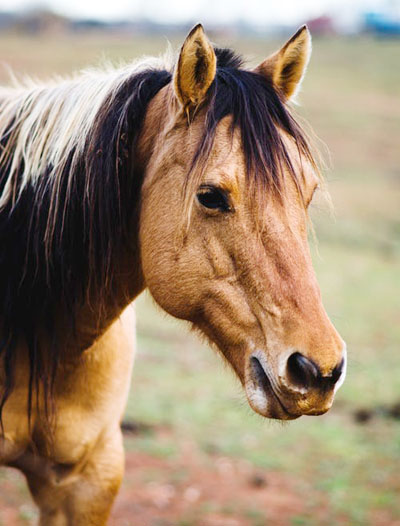DHHS → MeCDC → Disease Surveillance → Epidemiology → Vectorborne → Mosquitoes and Animals
Mosquitoes and Animals

Can pets and livestock get infected with mosquito-borne illnesses?
- Yes. Cats and dogs can become infected with heartworm disease, Eastern Equine Encephalitis (EEE), and West Nile virus (WNV). [1] EEE and WNV are very rare in pets and do not often result in serious illness. [2]
- Horses, camelids (llamas, alpacas), and some avian species (emus, pheasants) can become infected with EEE and WNV. [3, 4, 5, 6, 7]
- Sometimes animals are more affected than people and vice versa.
Do mosquitoes in Maine carry the heartworm parasite, which can infect my cat or dog?
- Yes. Aedes, Anopheles, and Culex are the most common types of mosquitoes that can spread heartworm disease, but over 70 species of mosquitoes can act as intermediate hosts of Dirofilaria immitis, the organism causing heartworm disease. [8]
- Talk to your veterinarian about heartworm preventative medications for your cat or dog.
Are there Eastern Equine Encephalitis (EEE) or West Nile virus (WNV) vaccines for animals?
- Yes. There is a vaccine that is approved for horses only. These vaccines can be used "off-label" for llamas, alpacas, and emus. [9, 10, 11, 12]
- There are no EEE or WNV vaccines for gamebirds such as pheasants.
What are the vaccination intervals?
- Both the EEE and WNV vaccines are annual core vaccines for horses following an initial 2-vaccine series. [13] Talk to your veterinarian for vaccine recommendations.
What are the signs and symptoms of mosquito-borne illnesses in pets and animals?
- Cats and Dogs: Signs and symptoms of heartworm disease include coughing, shortness of breath, and exercise intolerance. [8] There are usually no signs or symptoms in the early stages of heartworm disease. The first indicator of heartworm disease often happens at annual veterinary visits that include a screening test. [8]
While EEE and WNV are rare in cats and dogs, signs and symptoms may include anorexia (not eating), fever, and diarrhea, and illness may progress to seizures. [2]

- Horses: Signs and symptoms for EEE and WNV include lack of energy, strange behavior, trouble standing and swallowing, wobbliness, head pressing, circling, muscle tremors (especially with WNV infection) and sometimes death. [3]
- Emus and Pheasants: Signs and symptoms for EEE and WNV include sudden weakness, bloody diarrhea, bloody vomiting, depression, paralysis of the legs, involuntary circular movements, and sudden death. [6, 7, 14] The bodily fluids often contain high levels of virus and sick or dead birds should be handled very carefully. [15]
- Llamas and Alpacas: Signs and symptoms for EEE and WNV include anorexia (not eating), fever, lethargy, and head shaking. [16, 17]
What should I do if I think my animal has a mosquito-borne illness?
- Talk to your veterinarian if you suspect any serious disease or if your animal is showing neurologic signs (strange behavior). Your vet may conduct blood tests on your animal to find out if they have a mosquito-borne illness.
How are Eastern Equine Encephalitis (EEE)and West Nile virus (WNV) infections in animals treated?
- EEE/WNV infection is treated with supportive care, but there are no specific cures. [3]
- Supportive care can include: [3]
 anti-inflammatory medications
anti-inflammatory medications - fluid therapy to maintain hydration
- slinging to support animals that cannot stand on their own
- ensuring the animal is in a safe place to prevent injuries
How can I protect pets and livestock from mosquito-borne infections?
- Preventative medication for heartworm disease can be given monthly to cats and dogs. [8]
- Try to keep mosquitoes from reproducing at your home or farm by reducing standing water (water that is not moving). [18, 19]
- Use sustainable methods such as fly sheets for horses, screened stalls and other animal housing, effective fly sprays, and fans.
- Become informed and use appropriate vaccines.
- Keep animals in stalls or limit the amount of time animals are outside during dawn and dusk. This is when EEE and WNV carrying mosquitoes are most active. [20] This will help reduce their chances of getting mosquito bites.
- For more information on mosquito prevention, please visit the frequently asked questions website on mosquito prevention and property management.
Are there repellents that are recommended for use on animals?
- Cats: There are permethrin products labeled for use on cats. It is important to read labels carefully, since there are reports of permethrin poisoning in cats. [21]
- Dogs: Some flea and tick products for dogs contain permethrins and claim to repel mosquitoes. [22]
- Horses: Permethrin based products are labeled and recommended for use on horses. In general, products that repel flies for horses also repel mosquitoes.
Can humans get a mosquito-borne illness directly from livestock, pets, or from handling dead birds?
- Humans cannot get these illnesses directly from livestock or pets. For you to get infected, a mosquito must feed on an infected bird and then bite you. [3, 22]
- Humans and horses are known as dead-end hosts for EEE and WNV. This means that both humans and horses can get sick with these illnesses but cannot pass the viruses that cause these illnesses directly to other mosquitoes or animals. [23]
- There is no evidence that a person can get infected with EEE or WNV from handling live or dead infected birds. However, you should not touch dead birds with bare hands.
What do birds have to do with Eastern Equine Encephalitis (EEE) and West Nile virus (WNV)?

- Birds are reservoir hosts for EEE and WNV. This means that the viruses that cause EEE and WNV can live in a bird without making them sick and they serve as the source of infection for humans and other animals. [24]
- Mosquitoes are the vector for EEE and WNV. When a mosquito gets a blood meal from an infected bird, the mosquito picks up the virus that cause EEE or WNV and then can infect a human or animal when it bites them. [23]
What do I do when I find a dead bird and who do I call?
- If you find one or two dead birds, then you should carefully put the bird(s) in the trash. Wear gloves or use an inverted bag to avoid touching the bird with bare hands.
- If you find three or more dead birds associated with a farm, call the State Veterinarian's office at 207-287-3701.
- If you find three or more dead birds NOT associated with a farm, call the Department of Inland Fisheries, and Wildlife at 207-287-8000.
- Other helpful resources are the University of Maine Cooperative Extension, USDA Wildlife Services, and your veterinarian.
Does Maine's Health and Environmental Testing Laboratory (HETL) test dead birds for mosquito-borne diseases?
- HETL does not routinely test dead birds for mosquito-borne diseases.
- EEE and WNV are considered endemic (established in the environment) in Maine. [25, 26, 27]
Additional Resources
- University of Maine Cooperative Extension
- USDA Wildlife Services Avian Health webpage
- Federal CDC's webpage on West Nile Virus and Dead Birds
References
- Mani, T., Bourguinat, C., & Prichard, R.K. (2017). Polymorphism in ABC transporter genes of Dirofilaria immitis. International Journal for Paristology: Drugs and Drug Resistance, 7(2), 227-235. doi: 10.1016/j.ijpddr.2017.04.004
- Andrews, C., Gerdin, J., Patterson, J., Buckles, E.L., & Fitzgerald, S.D. (2018). Eastern equine encephalitis in puppies in Michigan and New York states. Journal of Veterinary Diagnostic Investigation, 30(4), 633-636. doi: 10.1177/1040638718774616
- Long, M. T. (n.d.). Overview of Equine Arboviral Enchephalomyelitis. Merck Veterinary Manual (online edition). Retrieved from https://www.merckvetmanual.com/nervous-system/equine-arboviral-encephalomyelitis/overview-of-equine-arboviral-encephalomyelitis
- Gibney, K.B., Robinson, S., Mutebi, J-P., Hoenig, D.E., Bernier, B.J., Webber, L....Fischer, M. (2011). Eastern Equine Encephalitis: An emerging arboviral disease threat, Maine, 2009. Vector-borne and Zoonotic Diseases, 11(6), 637-639. doi: 10.1089/vbz.2010.0189
- Wuschmann, A., and Ziegler, A. (2006). West Nile virus-associated mortality events in domestic Chukar partidges (Alectoris chukar) and domestic Impeyan pheasants (Lophophorus impeyanus). Avian Diseases, 50(3), 456-459.
- USGS National Wildlife Health Center. (1999). Field manual of wildlife diseases: General field procedures and diseases of birds. Retrieved from https://pubs.er.usgs.gov/publication/itr19990001
- Petrović, T., Blazquez, A.B., Lupulović, D., Lazić, G., Escribano-Romero, E., Fabijan, D.,...Saiz, J. (2013). Monitoring West Nile virus (WNV) infection in wild birds in Serbia during 2012: First isolation and characterisation of WNV strains from Serbia. Eurosurveillance, 18(44), 1-8.
- Atkins, C. (n.d.). Overview of Heartworm Disease. Merck Veterinary Manual (online edition). Retrieved from https://www.merckvetmanual.com/circulatory-system/heartworm-disease/overview-of-heartworm-disease
- Bedenice, D., Bright, A., Pedersen, DD., & Dibb., J. (2009). Humoral response to an equine encephalitis vaccine in healthy alpacas. Journal of the American Veterinary Medical Association, 234(4), 530-534.
- Davis, E.G., Bellow, N.M., Bryan, A.J., Hankins, K., & Wilkerson, M. (2014). Characterization of immune responses in healthy foals when a multivalent vaccine protocol was initiated at age 90 or 180 days. Equine Veterinary Journal, 667-674. doi:10.1111/evj.12350
- Reed., D.S., Glass, P.J., Bakken, R.R., Barth, J.F., Lind, C.M., Da Silva, L.,...Smith, J. (2014). Combined alphavirus replicon particle vaccine induces durable and cross-protective immune responses against equine encephalitis viruses. Journal of Virology, 88(20), 12077-12086. doi: 10.1128/JVI.01406-14
- Tengelsen, L.A., Bowne, R.A., Royals, M.A., Campbell, G.L., Komar, N., & Craven, R.B. (2001). Response to and efficacy of vaccination against eastern equine encephalomyelitis virus in emus. Journal of the American Veterinary Medical Association, 218(9), 1469-1473.
- American Association of Equine Practitioners. (2018). Core vaccination guidelines. Retrieved from https://aaep.org/guidelines/vaccination-guidelines/core-vaccination-guidelines
- Tully, T. (2008). Emu farmers reminded to vaccinate for EEE. American Emu Association. Retrieved from https://aea-emu.org/emu-farmers-reminded-to-vaccinate-for-eee/
- Morris, C.D., Baker, W.G., Stark, L., Burgess, J., & Lewis, A.L. (1994). Comparison of chickens and pheasants as sentinels for eastern equine encephalitis and St. Louis encephalitis viruses in Florida. Journal of the American Mosquito Control Association, 10(4), 545-548.
- Kutzler, M.A., Bildfell, R.J., Gardner-Graff, K.K., Baker, R.J., Delay, J.P., & Mattson, D.E., (2004). West Nile virus infection in two alpacas. Journal of the American Beterinary Medical Association, 225(6), 921-924.
- Nolen_Walston, R., Bedenice, D., Rodriguez, C., Rushton, S., Bright, A., Fecteau., M-E.,...Del Piero, F. (2007). Eastern Equine Encephalitis in 9 South American camelids. Journal of Veterinary Internal Medicine, 21, 846-852.
- Maciel-de-Freitas, R., & Lourenco-del-Oliveira, R. (2011). Does targeting key-containers effectively reduce Aedes aegypti population density? Tropical Medicine and International Health, 16(8), 965-973. doi: 10.1111/j.1365-3156.2011.02797.x
- Peterson, L.R., & Marfin, A.A. (2002). West Nile Virus: A primer for clinicians. Annals of Internal Medicine, 137(3), 173-179. doi: 10.7326/0003-4819-137-3-200208060-00009
- Davis, L.E., Beckham, J.D., & Tyler, K.L. (2008). North American encephalitic arboviruses. Neurologic Clinics, 26(3), 727-757. doi: 10.1016/j.ncl.2008.03.012
- Gray, A. (2001). Permethrin toxicity in cats following use of canine spot-on products. Veterinary Record, 149(21), 660.
- Frankhauser, B., Dumont, P., Hunter III, J.S., McCall, J.W., Kaufmann, C., Mathis, A.,...Soll, M.D. (2015). Repellent and insecticidal efficacy of a new combination of fipronil and permethrin against three mosquito species (Aedes albopictus, Aedes aegypti and Culex pipiens) on dogs. Parasites & Vectors, 8, 64. doi: 10.1186/s13071-015-0691-y
- Ahlers, L.R.H., & Goodman, A.G. (2018). The immune responses of the animal hosts of West Nile virus: A comparison of insects, birds, and mammals. Frontiers in Cellular and Infection Microbiology, 8(96), 1-9. doi: 10.3389/fcimb.2018.00096
- Molaei, G., Andreadis, T.G., Armstrong, P.M., Thomas, M.C., Deschamps, T., Cuebas-Incle, E.,...Texeira, T. (2013). Vector-host interactions and epizootiology of eastern equine encephalitis virus in Massachusetts. Vector Borne Zoonotic Diseases, 13(5), 312-323. doi: 10.1089/vbz.2012.1099
- Moreno-Madriñán, M.J., & Turell, M. (2018). History of mosquitoborne diseases in the United States and implications for new pathogens. Emerging Infectious Diseases, 24(5), 821-826. doi:10.3201/eid2405.171609
- Centers for Disease Control and Prevention. (2016) Final cumulative maps and data for 1999-2015. Retrieved from https://www-cdc-gov.ursus-proxy-1.ursus.maine.edu/westnile/statsmaps/cumMapsData.html
- Maine Center for Disease Control and Prevention. (2015). Eastern Equine Encephalitis and West Nile virus – Maine, 2015. Retrieved from https://www.maine.gov/dhhs/mecdc/infectious-disease/epi/vector-borne/documents/MBD-Maine-2015.pdf

